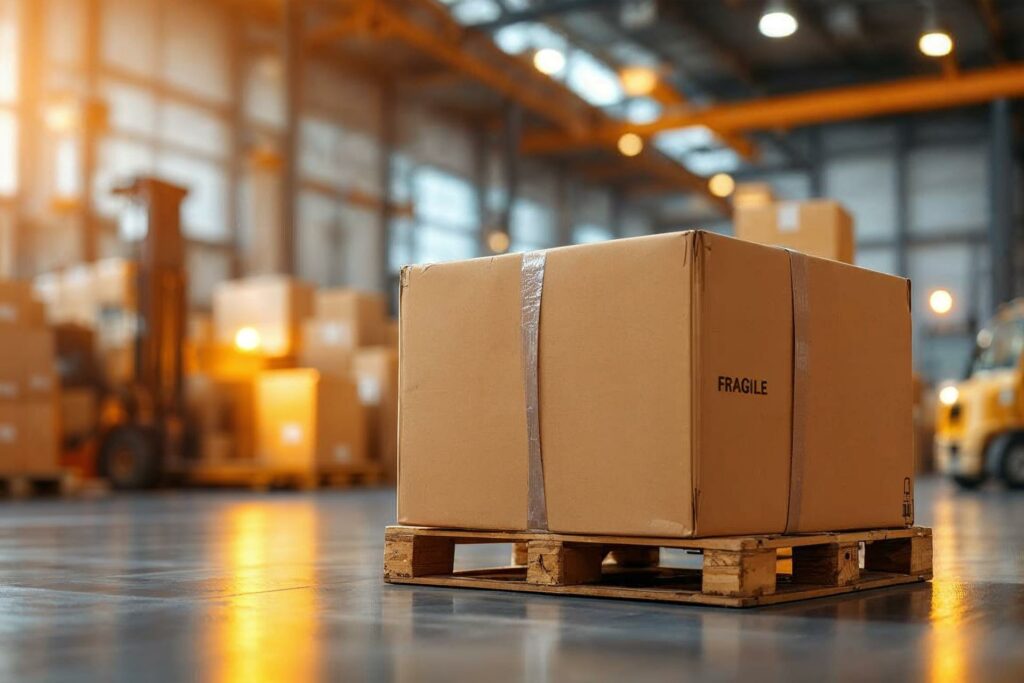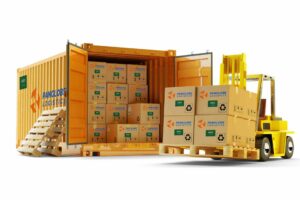As land freight technologies continue to evolve, one thing remains constant: proper cargo packaging is the foundation for safe transportation, cost efficiency, and damage reduction. Even the most advanced trucks and logistics systems can’t compensate for poor packaging practices that lead to broken goods or delayed deliveries.
At Panglobe Logistics, experts have outlined a set of industry-proven practices to ensure your shipments are protected throughout the land freight process.
What Are the Best Practices for Packaging Goods in Land Freight?
1. Pre-Evaluation and Smart Planning
- Understand the nature of your cargo — weight, size, fragility, value, and sensitivity to temperature or humidity.
- Choose high-quality, durable packaging materials tailored to the cargo type and transit conditions.
- Select the most secure way to package each item or group of items for optimal stability during transport.
- For fragile or hazardous goods, use clear labeling with detailed handling instructions.
2. Efficient Internal Packaging
- Wrap fragile items individually with cushioning materials like bubble wrap, packing paper, or foam.
- Fill any empty spaces inside boxes with fillers like air pillows, shredded paper, or foam inserts to prevent movement.
- Distribute weight evenly within each box to avoid excess pressure on any one side.
- Secure multiple items inside the same box to keep them from colliding and getting damaged.
3. Strong External Packaging
- Use boxes that closely match the size of the cargo, leaving enough room for cushioning but not excessive space for shifting.
- Seal all openings securely using high-quality packing tape. Applying multiple layers can increase box integrity.
- Stretch-wrapping boxes can add an extra layer of protection from moisture, dirt, and external damage.
- When stacking boxes on pallets, use durable pallets and secure the boxes tightly with straps or stretch film.
4. Clear Labeling and Marking
- Every package should be clearly labeled with the sender’s and recipient’s details, tracking numbers, and specific handling instructions (e.g., “Fragile,” “Hazardous Materials”).
- Use standard international handling symbols to clarify the nature of the contents and the care they require.
5. Safe Loading and Unloading
- Train loading staff on safe handling practices to avoid damage during movement.
- Provide proper equipment such as forklifts, dollies, and lifting straps for loading and unloading.
- Ensure even weight distribution in the truck to prevent tipping or imbalance. Heavier items should go on the bottom, lighter ones on top.
- Use load restraints like adjustable bars, tie-down straps, or inflatable airbags to prevent shifting during transit.
6. Monitoring and Technology Integration
- Use environmental sensors inside the truck to monitor temperature, humidity, and shock levels for sensitive goods.
- Implement real-time shipment tracking systems to monitor the status and location of cargo at any moment.
7. Continuous Review and Improvement
- Analyze any incidents of cargo damage to identify root causes and update packaging procedures accordingly.
- Regularly review and upgrade your packaging practices to meet the latest standards and technologies.
Conclusion
In land freight, success doesn’t just depend on fast trucks or modern systems—it starts with smart, secure packaging. By adopting these best practices, businesses can protect their shipments, reduce costs, and enhance customer satisfaction.
At Pan globe for Business and Logistics Services, we go beyond transportation—we offer complete logistics solutions that start at the packaging level. Whether you’re shipping fragile items, bulk orders, or sensitive goods, our expert team ensures your cargo is handled with precision, care, and the highest industry standards.
Contact Pan Globe today to learn how our tailored packaging and logistics solutions can safeguard your cargo and elevate your supply chain performance.
Live Customer Support:
📞 +966 50 370 8666





